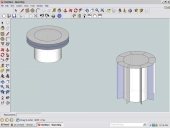
 1
1












Success has a Thousand Fathers , Failure is an Orphan
LOOK AT THE " SIMILAR THREADS " BELOW !















 and then enter web4deb into the you tube search engine you will end up at web4deb(s) channel, you then want to scroll down to his Rocket stove video
and then enter web4deb into the you tube search engine you will end up at web4deb(s) channel, you then want to scroll down to his Rocket stove video
Success has a Thousand Fathers , Failure is an Orphan
LOOK AT THE " SIMILAR THREADS " BELOW !
 1
1












































































Bill Fox wrote:Just can't seem to get these .bmp drawings to load. Am trying to attach them and keep getting the same message after they upload:www.permies.com is currently very busy and can't respond to all requests or is undergoing maintenance. Please try again later. Thank you. This makes propably 35 tries--any suggestions??





































|
Holly was looking awful sad. I gave her this tiny ad to cheer her up!
Support permies and give beautiful gifts to gardeners: permaculture playing cards.
https://gardener-gift.com/
|






